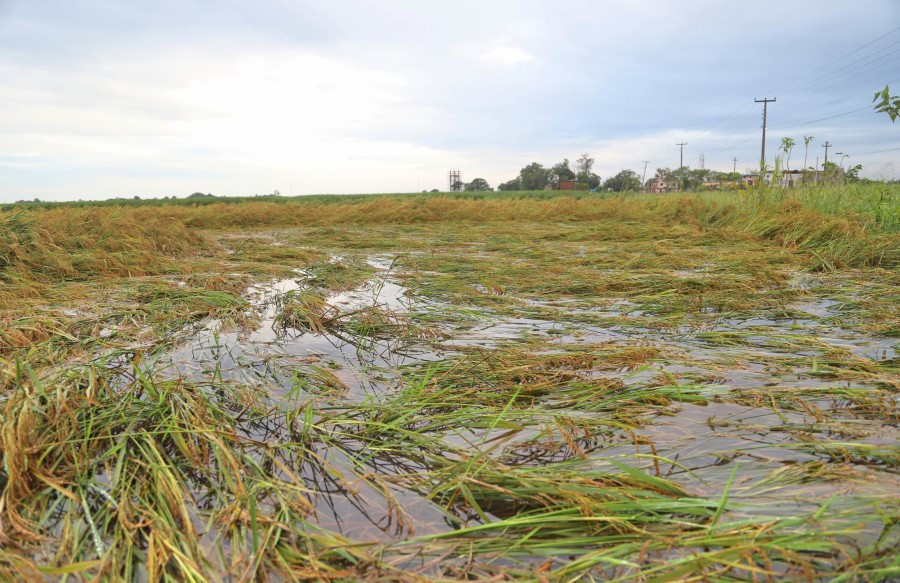Columns
Nepal and COP26
We should strike a deal with the developed countries to help us adapt to climate change.
Aadesh Subedi
Nepal has been going through one of the worst climate catastrophes in recent years. With the present status of global gain in climate change mitigation, this trend seems never-ending. I started working as a climate journalist in 2018 and have had opportunities to listen to climate stories from people living in remote quarters of the country and from those living in big cities and learn about their plight. I was startled to see how underestimated the climate change problem remains. Those story collecting moments were really an eye-opener for me as I came to understand the effects of climate change that I had never imagined had any connection with climate. For instance, there is an old man in the village of Narainapur in Banke district who could not afford the wedding expenses of his daughter because repeated droughts had wreaked havoc on his crops and left him poorer. Just imagine! You are not able to even get married because of climate change. This shows how deeply climate change has penetrated our lives.
We don't need to go far. It is enough to glance at the events of the past five years to gauge how the effect of climate change is increasing in frequency and intensity every day. We had one of the worst wildfire seasons in decades, leading to hazardous levels of air pollution. Educational institutions were closed all over Nepal, citing an environmental cause, an incident that had never happened before. When we were struggling with economic damage caused by Covid-19, our crops in the fields failed because of pests such as armyworms and locusts, both of which are linked to the changing climate.
Various disasters
As we were beginning to hope to quench the thirst of our capital Kathmandu with water from the Melamchi project, which is finally about to be completed after it was started more than 20 years ago, floods swept away that hope with huge damage to the scheme. Tourism and agriculture appeared to be two ways that could help Nepal get out of the economic damage caused by Covid-19, but that hope too seems blurry as climate change has turned our snow-capped mountains into bare black hills, and various disasters catalysed by heavy rainfall has caused damage to the roads and thus hampered tourist movement.
According to the Department of Transport, more than 200 roads have been damaged due to this year's monsoon. Further, farmers have lost their ready-to-harvest paddy to the monsoon mayhem lately, leading to huge economic losses. Along with other hilly districts of Nepal, Kathmandu saw a large outbreak of dengue in recent years, a disease that was once known only in the southern plains of the country. The list of climate hazards seems to be never-ending.
Nepal that accounts for only 0.02 percent of the world's carbon emissions, cannot contribute much to climate change mitigation. However, it has made efforts to reduce emissions by promoting the electric vehicle and increasing forest cover through scientific forest management. At this time, the government should direct its efforts at helping people adjust to changing climate. But the actions of the government in this sector seem to be insufficient at the moment.
The major reason why people are not able to grasp the effects of climate change is that they are not aware of the phenomenon. For instance, farmers are those groups of people who are majorly affected by climate change, but they are rarely aware of why they have uncertain rainfall or frequent droughts. They lack vital information and thus fail to react in this rapidly changing scenario. In many cases, the government has tried to help people by introducing new technology such as drip irrigation or rainwater harvesting.
However, many farmers are not aware of these new technologies. And some who are aware lack training in using them. Even if the farmers know how to use them, they ultimately abandon the use of those modern mechanics due to the lack of essential knowledge of repair and maintenance.
Crop insurance
Similarly, crop insurance can be a critical instrument in farming communities to help them cover the losses due to climate-related disasters. Though the government of Nepal has been encouraging crop insurance by providing subsidies on premium payments to farmers, the majority of farmers are not even aware that such an insurance policy exists. Thus, it is necessary to raise awareness about the government's crop insurance policy in the farming community. Regarding other disasters such as wildfire and dengue outbreaks, the government should build capacity to prevent them. For instance, to prevent wildfires, local bodies can draw fire lines or equip communities to control them before they start spreading.
Climate change is not a short-term problem. With the recent report from the Intergovernmental Panel on Climate Change, the future looks pretty bleak if world governments do not take proper actions to mitigate emissions. Being one of the most vulnerable countries, Nepal would be hampered unimaginably if sufficient adaptation efforts were not implemented. Nepal should come up with a long-term solution to mitigate the effects of climate change. The prime minister of Nepal himself is participating in the United Nations Climate Change Conference (COP26) slated to be held in Glasgow in November this year. He and his delegation should be present with a robust agenda and strike a good bargain with the developed countries to help people overcome the current effects of climate change and avoid such developments in the future.




 6.12°C Kathmandu
6.12°C Kathmandu













%20(1).jpg&w=300&height=200)

